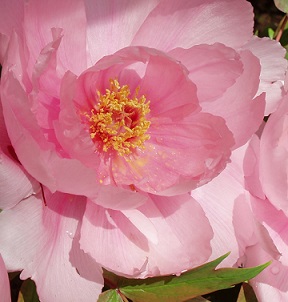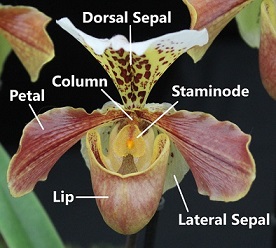Learn to be a Botanical Expert
 Plants are critical to all of our lives. They provide us with food, building materials, the raw products for pharmaceuticals, clothing and much more.
Plants are critical to all of our lives. They provide us with food, building materials, the raw products for pharmaceuticals, clothing and much more.
Without solid botanical knowledge, many industries simply could not perform and be as productive as they are - forestry, landscaping, crop production, grazing, environmental management, etc.
Studying this course can lay a foundation to work in any of these industries, and many others!
Why Botany though?
Botany is a broad-based science. There is a deficiency of people studying botany; and as older botanists leave the workforce, we have a looming demand for experts in botany - future employment opportunities are only likely to increase.
Studying botanical science keeps your options for a career wide. In today's world, change is inevitable, and a broader foundation in your education prepares you for an uncertain future far better. You will be better placed to identify and take advantage of opportunities than someone with a more specialised training.
COURSE CONTENT
- Botany I BSC104
- Plant Ecology BSC305
- Cell Biology BSC110
- Biochemistry I (Plants) BSC102
- Botany II - Applied Plant Physiology BSC204
- Biochemistry II BSC203
- Genetics BSC207
- Plant Breeding BHT236
- Biochemistry III (Plant Biochemical Processes) BSC302
- Climate Science BSC208
- Soil Management BHT105
- Plant Pathology BHT206
- Tissue Culture BHT306
- Research Project I BGN102
- Workshop I or an Industry Based Project
THERE IS ALWAYS MORE TO LEARN ABOUT PLANTS
 Once you have developed a solid understanding of how plants are identified and classified you can make sense of the huge range of organisms that exist. One thing most botanists and horticulturists would agree on is that no matter how good your plant knowledge is, there is always room for improvement.
Once you have developed a solid understanding of how plants are identified and classified you can make sense of the huge range of organisms that exist. One thing most botanists and horticulturists would agree on is that no matter how good your plant knowledge is, there is always room for improvement.
The Major Families
Whilst there are hundreds of plant families, it is not essential to be familiar with all of them. Some may only contain one or two species and others may be relatively rare. Some plant families are of much greater significance and importance than others in amenity horticulture. It is very worthwhile learning the characteristics of the families presented here. To make better sense of them they have been organised according to their phyla or divisions.
ANTHOPHYTA
Anthophyta is the largest group of plants. These are all flower-bearing plants, or angiosperms, although some plants in this group, such as grasses, bear flowers which are relatively inconspicuous.
Apiaceae (= Umbelliferae)
Some Key Features:
- Dicotyledon
- Leaves alternate, mostly compound, clasping the stem at their bases
- Flowers small mostly in umbels, calyx 5 lobes with 5 petals and 5 stamens
- Inferior ovary
- Conspicuous nectary inside the flower at the base of the style
The parsley family includes approximately 250 genera and over 2,000 species. They are commonly herbaceous plants, and rarely seen as a small shrub. Examples include: parsley, carrots, celery, fennel, Angelica, dill, and Actinotus.
The plants in the Apiaceae are all characterised by hollow stems and a flower head in an umbrella shape (i.e. umbel). There are 5 stamens alternating with petals, and there is a large number of individual flowers on each umbel. The flowers are small and bisexual (containing male and female parts). Sepals are usually small in a calyx of 5, which are free or united. The corolla consists of 5 free petals.
Many plants in this family are grown for food or medicinal purposes. A number are cultivated for their leaves (e.g. parsley, dill, chervil and coriander). Some are also cultivated for their seeds such as caraway, coriander, cumin which are used in flavouring. Plants such as carrots, celery and parsnips are grown commercially and are of economic importance.
Araceae
Some Key Features:
- Monocotyledon
- Most tuberous corms or rhizomatous herbs
- Leaves in rosettes or alternate along stems; often but not always heart shaped
- Fruit is a berry, rarely dry
Plants in the Arum family are known as aroids. They are usually characterised by large, roughly heart-shaped leaves, which are sometimes pinnately or palmately divided and alternate.
The flowers which have a single large finger-like fleshy spike or spadix surrounded by a leaf-like bract which may be coloured. The minute flowers on the inflorescence which often have no perianth, can be either bisexual or unisexual. Examples include: Anthurium, Caladium, Dieffenbachia, Philodendron, and Syngonium.
The Arum family is large containing over 100 genera and numbering more than 31,500 species around the world. They are mostly tropical plants however a few species are from temperate zones. Many plants in this family prefer a moist, damp shady position.
Plants generally have underground stems which are rhizomatous or tuberous, and they are often low-growing. Some are epiphytic.
Some plants have edible parts such as Monstera deliciosa which bears edible fruit, and Colocasia esculenta (Taro) which is grown for its starchy tubers in tropical regions. However, it should be noted that most of them are toxic. Other plants are grown for their foliage such as Caladium sp., Aglaonema sp., and Philodendron sp. Plants such as Anthurium, and Zantedeschia (arum lily) are grown for their flowers.
 Asteraceae (= Compositae)
Asteraceae (= Compositae)
Some Key Features:
- Dicotyledons
- Growth habit, leaf shape and leaf arrangement extremely variable
- Flowers occur clustered into heads, often but not always daisy like in appearance. Flower heads can occur singly or as many clustered for example on a spike or raceme
- Individual flowers either tubular or strap like or two lipped. Commonly 5 stamens, but occasionally 4 or 3
- Inferior ovary
The daisies comprise a very large, perhaps the largest, family of about 1,620 genera and 25,000 species. They are mainly herbaceous plants, most with a taproot and some with tubers (e.g. Dahlia). The leaves are typically alternate, sometimes opposite, rarely whorled, simple or compound, and often in basal rosettes.
The flowers are actually a composite of several to many small florets fused together in a flower head to appear as one flower. If the flower is pulled apart, it can be seen that it is made up of several individual units (florets), each one having its own set of floral parts (i.e. petal, stamen, stigma, ovary etc.). Some Asteraceae florets are incomplete and have only some of the floral parts (e.g. Helichrysum, Dahlia, Zinnia, Marigold, Tansy, Chrysanthemum, lettuce, sunflower, and others).
The corolla usually consists of a short or long tube and a diversely shaped limb. Depending on the shape of the limb, the floret is described as tubular (regular, 3- to 5-lobed limb), bilabiate (2-lipped limb), or ligulate (irregular, with one side of the corolla prolonged into a strap-shaped structure called a ligule). The florets of a single head are, in the simplest case, all shaped the same and bisexual. Frequently, e.g. in Bellis and Helianthus, a disc of regular florets is surrounded by a ring of irregular florets. In Centaurea, for example, the marginal florets are usually regular, but larger than the central florets, and fully sterile. Often the ray-florets are female, and the disk-florets are bisexual. The calyx is usually present as a pappus or hairs, occasionally a 5-lobed rim on the top of the ovary, but sometimes absent (e.g. Ambrosia). The corolla usually consists of five fused petals. There are usually five stamens, with short filaments, attached to the petals. The ovary is inferior, with two united carpels. The style is simple, branching into two stigmas. The flower heads are surrounded by an involucre of green bracts which can be mistaken for sepals. Individual flowers may have scaly bracts (e.g. Helianthus).
The fruit is an achene-like fruit, called a cypsela. It is frequently crowned by a persistent pappus which increases in size after fertilisation to assist with distribution. Only one seed per fruit is formed, usually without endosperm.
WHAT THIS COURSE CAN DO FOR YOU?
- Expand your knowledge and understanding of different plants
- Greatly increase the range of plants you can identify
- Improve your prospects to work with plants in agriculture, horticulture or environmental management
- Make you more aware of career and business opportunities to work with plants.